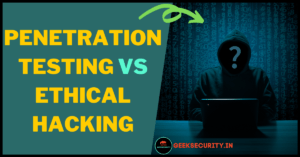Cybersecurity threats are a growing concern for individuals, businesses, and organizations of all sizes. Cybercriminals use a variety of methods to exploit vulnerabilities and gain access to sensitive information. In this article, we’ll discuss 10 common cybersecurity threats and how you can prevent them.
Contents
1)- Phishing Attacks
Phishing attacks are one of the most common cybersecurity threats. Cybercriminals use fake emails or websites to trick users into providing personal or sensitive information. To prevent phishing attacks, you should be cautious of suspicious emails, verify the sender’s email address, and avoid clicking on links or downloading attachments from unknown sources.
2)- Malware
Malware is a type of software designed to harm or exploit computer systems. Malware can come in many forms, including viruses, Trojans, and ransomware. To prevent malware attacks, you should keep your operating system and software up to date, avoid downloading software from untrusted sources, and use antivirus software.
3)- Password Attacks
Password attacks involve cybercriminals trying to guess or steal passwords to gain access to systems or sensitive data. To prevent password attacks, you should use strong, unique passwords for each account, enable two-factor authentication, and avoid using public Wi-Fi networks.
4)- Denial of Service(Dos)
Attacks A DoS attack involves overwhelming a website or server with traffic, causing it to crash or become unavailable. To prevent DoS attacks, you should use firewalls and other security measures to filter traffic, monitor your network for unusual activity, and use content delivery networks (CDNs) to distribute traffic.
5)- SQL Injection
SQL injection attacks involve inserting malicious code into a website or application’s database, allowing cybercriminals to steal or manipulate data. To prevent SQL injection attacks, you should use secure coding practices, validate user input, and use parameterized queries.
6)- Man-in -the-Middle Attack(MitM)
MitM attacks involve intercepting communication between two parties, allowing cybercriminals to eavesdrop or manipulate data. To prevent MitM attacks, you should use secure communication protocols, avoid using public Wi-Fi networks, and verify SSL certificates.
7)- Zero-Day Exploits
Zero-day exploits are vulnerabilities in software that are not yet known or patched by the vendor. To prevent zero-day exploits, you should keep your software up to date, use intrusion detection and prevention systems, and limit the use of vulnerable software.
8)- Insider Threats
Insider threats involve malicious or unintentional actions by employees or other authorized individuals. To prevent insider threats, you should implement security policies and procedures, monitor employee activity, and limit access to sensitive data.
9)- Social Engineering
Social engineering involves using psychological manipulation to trick individuals into divulging sensitive information or performing actions that are harmful to themselves or their organization. To prevent social engineering attacks, you should educate employees about common tactics, use two-factor authentication, and limit access to sensitive data.
10)-Advanced Persistent Threats (APTs)
APTs are long-term, targeted attacks by skilled cybercriminals or nation-state actors. To prevent APTs, you should use advanced threat detection and prevention systems, monitor your network for unusual activity, and implement strong access controls.
CONCLUSION:
In conclusion, cybersecurity threats are constantly evolving, and it is important to stay vigilant and take proactive steps to prevent them. By implementing best practices and using effective security tools and techniques, you can protect yourself and your organization from cybercriminals.


